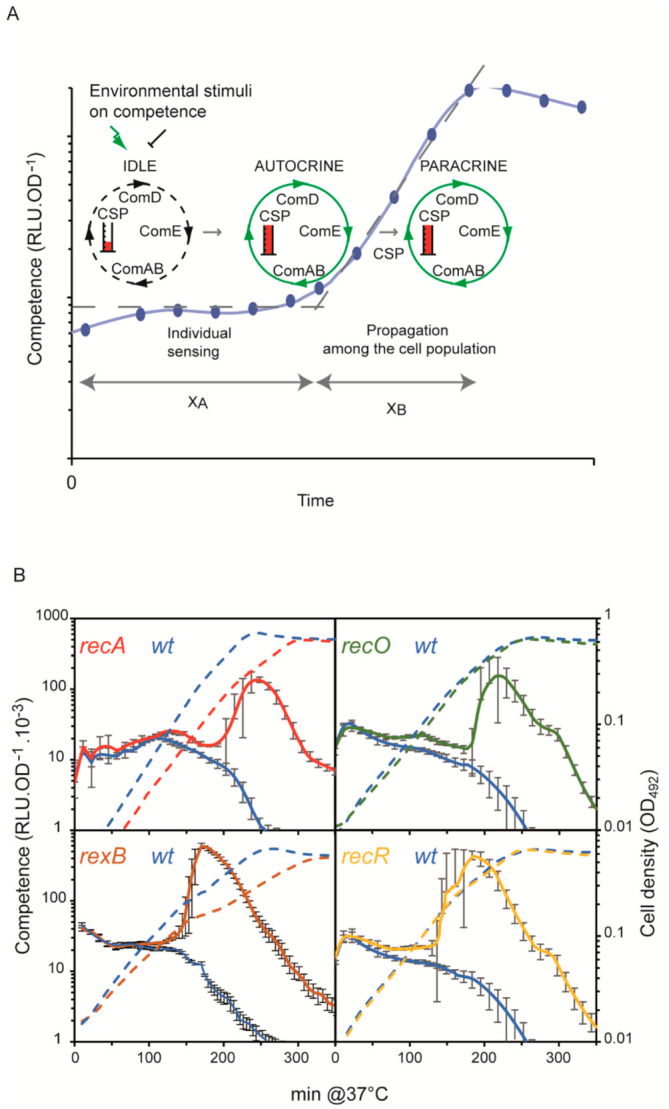Figure 1.

Pneumococcal competence development cycle: effect of repair–deficiency mutations. (A): Model of competence development in S. pneumoniae. The blue dots/blue line shows the development of competence in an exponentially growing culture measured by a transcriptional fusion of the luciferase gene in specific activity (Relative luminescence units (RLU) divided by the cell density (OD)); the growth curve is omitted for clarity. The core sensing and regulatory machinery of competence are composed of the comA, comB, comC (CSP), comD, and comE gene products, which define a positive feedback loop referred to as ComABCDE. The green arrow and the black T-bar represent external positive and negative inputs, which balance the idling of the core sensing machinery. At some point, growth conditions will provide enough positive input to activate the ComABCDE positive feedback loop in an autocrine mode in some of the cells. Next, this fraction of cells propagates competence within the population in a paracrine mode by transmitting the CSP via cell-to-cell contact. In this model, the autocrine and paracrine modes of competence development proceed in two distinct periods defined as XA and XB, respectively [9]. XB is followed by shut-off of competence gene expression. The dashed grey lines represent competence gene expression during the XA and XB periods. (B): RecA recombination repair pathways prevent competence development. Cells were grown in C+Y medium with initial pH adjusted with HCl to inhibit competence development of the reference strains R825 or R895 (blue curves); see also Figure S1. Competence of the population is shown as solid lines (RLU.OD492−1 × 103) and cell density as dashed lines (OD492). Each panel shows a comparison of competence development of the WT strain with that of the mutant strains recA− (R3309; red), rexB− (R4036; light brown), recO− (R2411; dark green), and recR− (R2412; orange) with that of their respective isogenic WT (wild type) strain (R825 for recA− and rexB− strains, and R895 for the others). Data are the means of at least five independent experiments, with standard deviations shown for the RLU.OD492−1 measurements.
